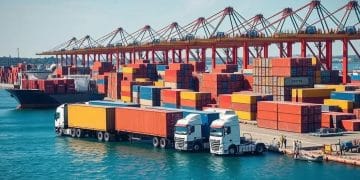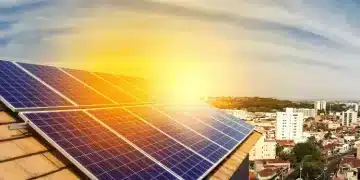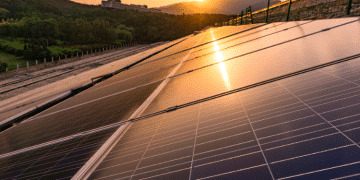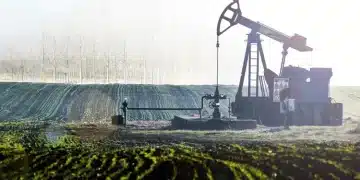South Africa’s Clean Energy Future: Understanding the Impact of Trump’s Trade Policies
Understanding Trump’s Tariff Decision
Overview of Trump’s 30% Tariff on South African Imports
The announcement of a 30% tariff on South African imports by President Donald Trump marked a significant shift in trade dynamics.
The primary aim was to protect US industries from what was perceived as unfair competition.
However, this decision sent ripples through the global markets.
Impact on Global Markets and Investor Confidence
The immediate reaction to Trump’s tariff decision was a jolt to investor confidence.
The global markets, already sensitive to trade uncertainties, experienced heightened volatility.
Defensive measures by investors further exacerbated market instability.
Such disruptions underscore the interconnectedness of global economies and how policies in one country can have far-reaching effects.
Specific Implications for Trade Relations Between US and South Africa
The imposition of tariffs strained trade relations between the US and South Africa.
Besides the direct impact on the renewable energy sector, which we’ll explore later, other industries faced challenges.
Increased tariffs meant higher costs for South African goods entering the US market, reducing their competitiveness.
This situation demands South Africa to explore new trade partnerships and pivot towards more resilient economic strategies.
This turbulence calls for proactive measures and innovative approaches to not only mitigate immediate impacts but also pave the way for long-term economic stability and growth.
Such adaptability will be crucial as we delve into more specific sectors affected by these policies.

Immediate Impact on South Africa’s Renewable Energy Sector
Potential 25% Increase in Project Costs
The imposition of a 30% tariff on South African imports by the Trump administration is set to significantly impact the costs associated with renewable energy projects.
According to Fibon Energy CEO Avesh Padayachee, the tariffs, combined with an already weakening rand, are likely to push project costs up by as much as 25% in the short to medium term.
This increase in expenditure not only affects the overall budget but also creates a ripple effect, causing delays in infrastructure investments and raising the risk associated with new projects.
Disruption to Existing Supply Chains and Infrastructure Development
South Africa’s renewable energy sector has long been dependent on imported hardware, with more than R17 billion worth of solar components brought into the country last year alone.
The new tariffs disrupt these established supply chains, complicating the procurement of essential components and raising logistical challenges.
This disruption is a reminder of the vulnerabilities in the current system, emphasizing the need for developing more robust and localized supply chains to safeguard future projects.
Effect on R17 Billion Worth of Solar Component Imports
The impact of the tariffs is particularly evident when considering the substantial value of solar component imports.
As the sector grapples with higher costs and uncertainties, the effect on R17 billion worth of imports is pronounced.
The increased expenses and instability prompt stakeholders to reassess their dependency on imported technology and consider alternatives to maintain momentum in their renewable energy initiatives.
As South Africa navigates these new challenges, the focus will likely shift towards innovation and localization in an effort to build resilience and reduce reliance on imported technology.
This period of disruption might well serve as an opportunity to foster creativity and explore new avenues for sustainable growth.
Broader Economic Implications
Impact on Agricultural and Automotive Manufacturing Sectors
South Africa’s agricultural and automotive manufacturing sectors are bracing for the fallout from Trump’s trade policies.
The 30% tariff on South African imports will likely increase the cost of inputs, eroding the competitiveness of these critical industries.
In agriculture, rising prices for equipment and supplies could squeeze profitability, impacting both small-scale and commercial farmers.
This, coupled with rising energy and water costs, means that farmers face an uphill battle to maintain their margins.
The automotive sector, another cornerstone of South Africa’s economy, is similarly affected.
Higher import costs for parts and components will likely push up production costs, making South African vehicles less competitive in global markets.
This, in turn, could lead to reduced export volumes and narrower profit margins.
Challenges from US Withdrawal from Just Energy Transition Partnership
The US withdrawal from the $9 billion Just Energy Transition Partnership (JETP) adds another layer of complexity.
This initiative was aimed at financing the country’s shift towards a sustainable and inclusive energy sector.
Its withdrawal leaves a significant gap in project financing, further destabilizing an already fragile economic environment.
Effects on Commercial Farm Budgets and Job Market
Commercial farms are already grappling with high energy and water costs, which consume nearly a third of their budgets.
The tariff increase will exacerbate these issues by raising the cost of imported farming equipment and inputs.
This could lead to reduced profitability, lower investment in technology, and, ultimately, job losses.
Given that agriculture employs a significant portion of the South African workforce, this could have broad implications for the job market, particularly in rural areas where employment opportunities are already limited.
As South Africa navigates these economic challenges, there’s a clear need for innovative solutions and strategic investments to bolster resilience and ensure a sustainable future.
Opportunities Amid Challenges
Potential for Local Manufacturing and Innovation Growth
Trump’s tariffs are pushing South Africa to reconsider its dependency on imported clean energy technology.
This disruption serves as a wake-up call for local manufacturing.
By building local capacity, South Africa can reduce its vulnerability to international market fluctuations and tariffs.
Increasing domestic production of renewable energy components like solar panels and wind turbines can spur innovation within the country.
In turn, this will create job opportunities and drive economic growth.
Prospects in European, Asian, and African Markets
While Trump’s tariffs may have closed some doors, they have opened others in Europe, Asia, and especially Africa.
The demand for clean energy is surging in these regions.
South Africa has the expertise and capacity to meet this growing demand.
Opportunities range from solar installations in European countries to green hydrogen projects in Asia.
Africa itself is set to become a significant market for cleantech, projected to be worth R200 billion by 2035.
This creates an enormous potential for South African companies to export their products and services.
Projected R200bn African Cleantech Market by 2035
The African market is poised to become a powerhouse in cleantech.
As nations across the continent seek sustainable energy solutions, South Africa can position itself as a key player.
This market growth can help mitigate the short-term disruption caused by tariffs and foster a more resilient clean energy sector.
Companies that can innovate and adapt will thrive, paving the way for long-term sustainability and economic stability.
The green economy in South Africa stands at a pivotal juncture.
By embracing these challenges, the nation can turn obstacles into opportunities, driving growth and innovation.
Through focused efforts on local production, expanding into new markets, and tapping into Africa’s burgeoning cleantech sector, South Africa can secure a stronger, more resilient energy future.
Path to Energy Sovereignty
Development of Local Capacity and Reduced Import Dependence
Trump’s tariff decision is a pivotal moment for South Africa’s renewable energy sector.
While initially disruptive, it has spotlighted the nation’s heavy reliance on imported clean energy technology.
This situation underscores the urgent need for South Africa to build local capacity, which will reduce dependence on foreign imports and enhance long-term energy sovereignty.
The current scenario provides an impetus for local industries to innovate and fill gaps left by disrupted supply chains.
By focusing on local manufacturing and efficient resource utilization, South Africa can mitigate the impacts of the 30% tariff and potential 25% increase in project costs.
Investment in local production facilities and training programs will be critical in driving this transformation.
Government Initiatives for Creating 15,000 New Green Jobs by 2030
The South African government is well aware of the challenges and opportunities presented by Trump’s tariffs.
Programs like the SA Renewable Energy Masterplan are targeting the creation of 15,000 new green jobs by 2030, aiming to bolster the local clean energy industry.
These initiatives are vital for economic growth and energy independence, providing much-needed employment while fostering a skilled workforce that can support the green economy.
Supporting local companies through subsidies, tax incentives, and research and development grants will further accelerate the shift toward energy sovereignty.
Additionally, public-private partnerships can play a significant role in mobilizing resources and expertise to achieve these ambitious goals.
Focus on Home-Grown Solutions and Technological Innovation
With the spotlight on local innovation, South African entrepreneurs and researchers are presented with an unprecedented opportunity to address energy challenges with home-grown solutions.
From modular solar systems to advanced water-saving technologies, the potential for technological advancements is vast.
Creativity and resourcefulness will be key as South Africa navigates the disruptions caused by Trump’s tariffs.
By investing in local research and fostering a culture of innovation, the country can develop sustainable energy solutions that not only serve its needs but also position it as a leader in the global cleantech market.
As South Africa focuses on building local capacity, creating jobs, and driving innovation, it is on the path to a more resilient and sustainable energy future.
Looking ahead, it is essential to continue supporting policies that enhance energy sovereignty and foster an ecosystem where local solutions can thrive.
Future Outlook and Recommendations
Building Long-term Resilience in the Renewable Energy Sector
The path to long-term resilience in South Africa’s renewable energy sector begins with a strategic focus on localization and innovation.
To mitigate the impacts of Trump’s 30% tariff on South African imports, a shift towards local manufacturing is essential.
Encouragingly, the South African government has already set targets, like the SA Renewable Energy Masterplan, which aims to create 15,000 green jobs by 2030.
These initiatives promote the development of home-grown solutions, fostering a self-sustaining energy industry less dependent on imported technologies.
Importance of Localisation and Innovation in Sustainable Development
Localisation and innovation are crucial for sustainable development.
By investing in local capacity, South Africa can lessen its reliance on volatile international markets and tariffs.
This means supporting small and medium-sized enterprises in the renewable energy sector and investing in research and development for new technologies.
Moreover, as companies adapt to these changes, innovative solutions will emerge, making projects more cost-effective and efficient.
This shift will not only stabilize the renewable energy sector but will also drive economic growth and job creation.
Opportunities for a Smarter, Stronger, and More Resilient Energy Future
The challenges posed by global trade shifts also present unique opportunities.
South Africa can capitalize on growing demand in European, Asian, and African markets for renewable energy solutions.
With Africa’s cleantech market projected to be worth R200bn by 2035, South African companies have a significant opportunity to expand their footprint. By positioning itself as a leader in green innovation, South Africa can become a key player in the global energy transition.
In this evolving landscape, South Africa’s renewable energy sector must prioritize building resilient and adaptive systems.
Embracing localization and fostering a culture of innovation will pave the way for a smarter, stronger, and more resilient energy future.





